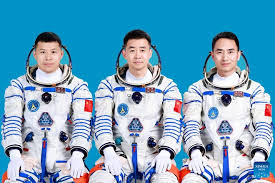Russian Organ-Avt bioprinter experiment successful

Moscow: The experiment conducted by Russian cosmonaut Oleg Kononenko aboard the International Space Station (ISS) in 2018 to print the human’s cartilaginous tissue and the mice’s thyroid gland using the Organ-Avt bioprinter has been successful, Projects Head of 3D Bioprinting Solutions Yusef Khesuani said.
“We can state the fact that the assembly was successful and the internal structure of these organs is intact. We can say already now, at the primary stages, that the experiment crowned with success,” Khesuani said.
All the samples of the printed tissues are being studied in the histology lab of 3D Printing Solutions’ partners, he said. “The primary results have been obtained and they are successful,” Khesuani noted.
The final results will be released in the so-called express report, which 3D Bioprinting Solutions will compile jointly with the Central Research Institute of Machine-Building (TsNIImash, the main research institute of Russia’s State Space Corporation Roscomsos). This report will be published no later than February, he said. No serious problems emerged during the experiment, Khesuani noted.
“There were certain difficulties during the experiment with regard to the speed of carrying it out. We expected it to be conducted quicker. But no critical factors that could affect the experiment occurred,” he stressed.
There are plans to transplant the living tissues printed on the ISS to mice on Earth, Khesuani said.
“We have such a desire [to use the living tissues printed on the ISS to transplant them to the mice on Earth] but for this purpose it is necessary to further develop the infrastructure on the ISS because the corresponding bioreactors will be required,” he said.
“And it is also necessary to improve the system of sending the printed material back to Earth because more degrees of protection are needed for this material to be transplanted. An infrastructural solution in outer space is required: additional equipment and additional operations,” Khesuani pointed out.
NASA has bioreactors that have proven their worth in outer space. Also, bought-in systems that have demonstrated their efficiency should be used, he added.
Such bioreactors have been installed on the ISS’ American segment and they are absent in the Russian segment, he said.
“There is no sense for us to develop our own bioreactor because turnkey systems are available. We can buy the US bioreactor and send it to the Russian segment. It is available on the market,” Khesuani explained.
3D Bioprinting Solutions, which has developed the Organ-Avt, does not plan to send a new bioprinter to the orbital outpost, Khesuani said.
“We won’t send a new bioprinter because the existing device has remained on the ISS. It will stay there until 2024 and it has become part of scientific equipment in the station’s Russian segment. Only biological materials need to be sent but there no exact dates for that so far. This issue is being discussed with colleagues from Roscosmos, Energia [Rocket and Space Corporation] and TsNIImash,” Khesuani said.
As the projects head of 3D Bioprinting Solutions said, he discussed with his colleagues from the US Center for the Advancement of Science in Space (Casis) the possibility of using the space station’s Russian and American segments for conducting joint experiments.
The bioprinter can be used in the orbital outpost’s Russian segment while bioreactors or the cell cultivating system can be employed in the US segment, he specified.
“After that, this [the samples obtained] will be delivered to Earth: a part of the material will be sent to our laboratory and the other part to the US lab for carrying out subsequent tests and research,” he explained.
The Organ-Avt bioprinter developed to carry out the world’s first experiment for printing living tissues was delivered to the space station on December 3 aboard the manned Soyuz MS-11 spacecraft.
The magnetic 3D-bioprinter has been devised to grow living tissues and eventually organs and it can also be used to study the influence of outer space conditions on living organisms during lengthy flights.
The experiment has been devised by 3D Bioprinting Solutions, a bio-technical research laboratory, which is a Russian start-up and a subsidiary of Invitro company.
The plans to deliver the bioprinter’s first copy failed after the aborted launch of the Soyuz-FG booster with the manned Soyuz MS-10 spacecraft from the Baikonur spaceport on October 11.
The experiment to print living tissues was conducted by Russian cosmonaut Kononenko. In particular, according to Roscosmos’ data, he managed to create “the organic construct of a mouse’s thyroid gland.”
The biological samples were delivered back to Earth aboard the manned Soyuz MS-09 spacecraft on December 20.





